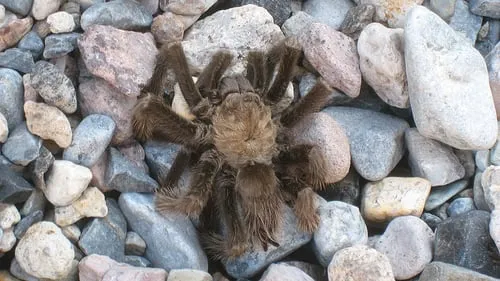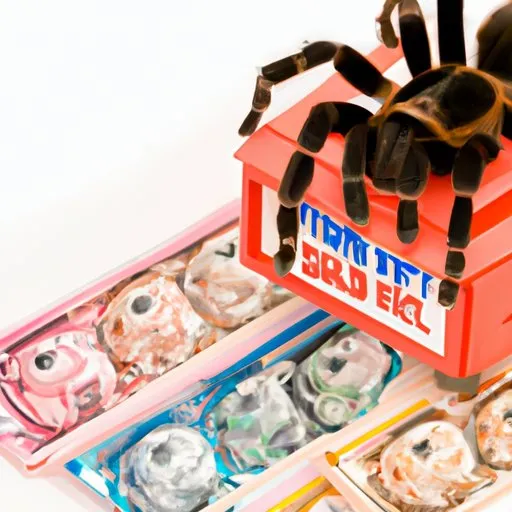Tarantula Cost Overview
Owning a tarantula can be a fascinating and rewarding experience, but it’s essential to understand the costs involved before bringing one home. Tarantula ownership goes beyond the initial purchase price and includes ongoing expenses for housing, food, and veterinary care. This comprehensive guide breaks down the various costs associated with tarantula ownership, helping you budget and prepare for the responsibility. Whether you’re a seasoned pet owner or a first-time buyer, understanding the financial commitment is crucial for ensuring the well-being of your eight-legged friend. We will explore the initial setup costs, recurring expenses, and factors that influence the overall price, enabling you to make an informed decision about tarantula ownership.
Initial Tarantula Purchase Price
The cost of a tarantula itself is the first expense to consider. Prices vary significantly depending on the species, age, size, and availability. Some common species are relatively inexpensive, while rarer or more exotic varieties can command higher prices. Juvenile tarantulas typically cost less than adults, but the price difference does not always reflect the overall cost since juveniles may require more careful care and time before reaching adulthood. Purchasing from reputable breeders or pet stores is advisable to ensure you receive a healthy specimen. Beware of significantly low prices, as these may indicate unhealthy animals or unethical practices. Always consider the breeder’s reputation, the tarantula’s condition, and any health guarantees offered before making a purchase.
Species Selection Impact on Cost

The species of tarantula you choose plays a significant role in determining the overall cost. Common species like the Chilean Rose Hair tarantula are often more affordable due to their widespread availability and ease of care. These species are popular choices for beginners because they are generally docile, readily available, and have lower maintenance requirements. In contrast, rarer species, such as certain Asian or African tarantulas, can be significantly more expensive. The increased price reflects the rarity, the difficulty in breeding them, and sometimes, the specialized care requirements. Researching different species and their needs is essential to align your choice with your budget and experience level. Consider factors like temperament, venom potency, and specific environmental needs when making your selection, as these will influence ongoing expenses.
Common Tarantula Species Prices
Understanding the price range for popular tarantula species helps in budgeting. The Chilean Rose Hair tarantula, often priced between $20 and $50, is a great starting point. Mexican Red Knee tarantulas typically range from $30 to $75. These prices reflect their commonality, relatively easy care, and availability in most pet stores. More exotic species, such as the Cobalt Blue tarantula or the Pink Zebra Beauty, can range from $80 to $200 or even higher, depending on size, age, and origin. Keep in mind that prices can fluctuate based on market demand, breeder availability, and the tarantula’s overall health. Always compare prices from multiple sources and ensure the tarantula appears healthy and active before making a purchase.
Housing and Enclosure Costs
Setting up the right enclosure is a crucial aspect of tarantula ownership and significantly impacts the initial cost. The size of the enclosure depends on the tarantula’s size and species, with larger tarantulas needing more spacious habitats. A basic enclosure can range from $20 to $100, depending on its size, material (glass or acrylic), and any special features like ventilation. You’ll also need to factor in the cost of substrate, which is the bedding material used in the enclosure. Substrate costs vary depending on the type of material, with options like coco coir, peat moss, or a mixture of both, often being the most cost-effective choices. Ensure the enclosure is escape-proof and provides a suitable environment for your tarantula to thrive.
Essential Equipment Costs

Beyond the enclosure, several essential pieces of equipment are necessary. These include items for maintaining the proper temperature and humidity levels, which are vital for tarantula health. A heat source, such as a heat mat or a ceramic heat emitter, may cost between $15 and $40, depending on the size and the enclosure’s needs. A reliable thermometer and hygrometer to monitor temperature and humidity will cost around $10 to $30. Additional items like water dishes, hides, and decorations can add to the cost, but these are often relatively inexpensive. It’s essential to prioritize equipment that ensures a stable and suitable environment for your tarantula to prevent health issues and promote its well-being.
Substrate and Decor Costs
The substrate and decor within the enclosure significantly influence both the cost and the tarantula’s well-being. Substrate, which serves as the bedding, should mimic the tarantula’s natural environment and maintain the correct humidity levels. Coco coir and peat moss are popular and affordable choices, typically costing between $10 and $20 per bag. Decorations such as hides, branches, and artificial plants enrich the environment and provide enrichment. These can range from a few dollars to $20 or more, depending on their complexity and material. It is crucial to choose non-toxic decorations and ensure the substrate is clean and replaced regularly to prevent the build-up of mold and bacteria, promoting a healthy environment for the tarantula.
Ongoing Tarantula Care Expenses
Recurring expenses make up a significant portion of the cost of tarantula ownership. These include food, substrate replacement, and potential veterinary care. The frequency of these expenses varies depending on the tarantula’s species, age, and individual needs. Budgeting for these ongoing costs is vital for ensuring you can provide the best possible care for your pet. Regular care is not only essential for the tarantula’s health but also for maintaining a clean and safe environment, preventing potential health issues and increasing the lifespan of your pet. Adequate planning will help you manage the financial responsibilities of tarantula ownership effectively.
Food and Feeding Costs

Feeding your tarantula is a regular expense. Tarantulas are carnivorous and typically eat insects like crickets, mealworms, and roaches. The cost of food varies depending on the quantity you buy and the species you select. A box of crickets might cost between $5 and $15, while mealworms and other feeder insects can be slightly more. The frequency of feeding depends on the tarantula’s age and size. Juveniles usually need to be fed more often than adults. Consider the cost of supplements like calcium powder and vitamin D3, which can be dusted on the insects to ensure your tarantula receives the necessary nutrients. Planning your food purchases and sourcing food in bulk can help reduce the ongoing costs.
Heating and Lighting Costs
Maintaining the correct temperature and lighting conditions can add to your monthly costs. While some tarantulas do not require specialized lighting, many benefit from a heat source. A heat mat uses a small amount of electricity, and the cost will depend on the size and the energy rates in your area. Monitoring the temperature with a thermometer is essential to avoid overheating or underheating the enclosure. Ensuring the correct environment contributes significantly to the tarantula’s health and well-being. While these costs are typically not substantial, they should still be included in your budgeting. Choosing energy-efficient equipment can help minimize these expenses.
Veterinary Care and Unexpected Costs
Although tarantulas are relatively low-maintenance pets, unexpected costs can arise. Veterinary care for tarantulas is often an underestimated expense. Finding a vet experienced with arachnids can be challenging, and consultations, medications, or treatments can be expensive. It’s advisable to research local exotic animal vets beforehand. Additionally, always have a contingency plan in case of illness or injury. Other unexpected costs could include replacing damaged equipment, purchasing new supplies, or addressing potential issues like mites or other parasites. Setting aside a small emergency fund can provide peace of mind and help manage unforeseen expenses that might occur during your tarantula’s lifetime.
Long-Term Tarantula Ownership Cost

The long-term costs of owning a tarantula involve considering the tarantula’s lifespan and the ongoing expenses. Many species can live for several years, with some females living for over 20 years. Over such a long time, even small recurring costs add up. Factor in the cost of food, substrate changes, potential veterinary care, and the replacement of equipment. Regular preventative maintenance, such as enclosure cleaning and temperature monitoring, will help minimize the risk of health issues and unexpected expenses. Properly budgeting and planning for the long-term will help ensure you can provide the care your tarantula needs for its entire lifespan. Thinking ahead helps in making informed decisions about your purchase.
Factors Affecting Total Cost
Several factors influence the total cost of tarantula ownership. These include the species’ rarity, availability, and the specific care requirements. Exotic or rare species are generally more expensive than common ones, and their care needs may be more complex, leading to higher expenses. The size and age of the tarantula also influence costs. Larger, adult tarantulas are more expensive than juveniles, but they also require larger enclosures and potentially more food. Furthermore, your location can impact the price, as availability and demand vary by region. Researching the market, comparing prices from different sources, and considering all the factors before purchase will help you budget effectively and ensure you can provide your tarantula with the care it requires throughout its life.
Size and Age Impact on Price
The size and age of a tarantula directly affect its purchase price. Juvenile tarantulas are often more affordable because they are smaller and haven’t reached their full size. However, they can be more delicate and require a more controlled environment to thrive. Adult tarantulas are generally more expensive due to their maturity and fully developed size. The price reflects the time and resources the breeder invested in the tarantula’s growth. While adults are more costly, you’ll have a clearer picture of the species’ appearance and temperament. When budgeting, factor in the initial price and the ongoing costs associated with their respective life stages. Whether you choose a juvenile or an adult, ensure you provide appropriate care to promote a healthy life and ensure the tarantula’s needs are met.
Rarity and Availability Impact on Price

Rarity and availability heavily influence the cost of tarantulas. Rare species, those that are difficult to breed or have limited origins, often command much higher prices. The demand for such species can also increase prices further. Common tarantula species, such as the Chilean Rose Hair, are readily available in most pet stores and are generally more affordable. Before purchasing a tarantula, research the species’ rarity and availability to understand the price range. Also, consider ethical sourcing and the breeder’s reputation. Be wary of extremely low prices for rare species, as this may indicate poor conditions or illegal practices. Understanding how rarity and availability affect the cost can assist you in your selection.
Tips for Budgeting Your Tarantula
Effective budgeting is essential for tarantula ownership. Start by estimating the initial costs, including the tarantula’s purchase price, enclosure setup, and essential equipment. Create a monthly budget for recurring expenses, such as food, substrate replacement, and electricity for heating and lighting. Research prices from various sources, compare options, and consider purchasing supplies in bulk to save money. Setting aside an emergency fund is vital to cover unexpected veterinary costs or equipment repairs. Choosing a species with reasonable care requirements can also help minimize long-term expenses. Regularly review your budget and adjust as needed to ensure you can continue providing your tarantula with excellent care. Good financial planning ensures a happy and healthy pet.
